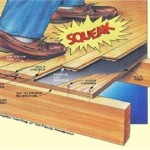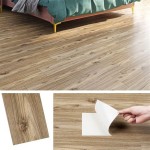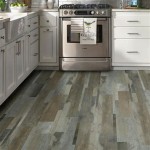Clear Epoxy Floor Coating for Wood: A Comprehensive Guide
Clear epoxy floor coatings offer a robust and aesthetically pleasing solution for enhancing and protecting wooden surfaces. This type of coating provides a durable, seamless finish that can withstand heavy traffic, resist stains, and significantly extend the lifespan of wood floors. Understanding the properties, application process, and maintenance requirements of clear epoxy is crucial for achieving optimal results.
Epoxy resins are thermosetting polymers that, when mixed with a hardener or catalyst, undergo a chemical reaction to form a rigid, cross-linked structure. This process creates a protective layer that is resistant to a wide range of environmental factors. The clarity of the epoxy allows the natural beauty and grain of the wood to remain visible, making it a popular choice for both residential and commercial applications.
While epoxy coatings offer numerous advantages, careful consideration must be given to the specific type of wood, the intended use of the floor, and the preparation required. Improper application or neglecting essential preparatory steps can lead to issues such as bubbling, peeling, or inadequate adhesion. This article will delve into the various aspects of clear epoxy floor coatings for wood, providing a comprehensive understanding of the process and its associated considerations.
Understanding the Benefits of Clear Epoxy Coatings for Wood
Clear epoxy coatings provide a multifaceted approach to protecting and enhancing wood floors. The key advantages extend beyond mere aesthetic appeal, offering concrete benefits that contribute to the longevity and practicality of wood flooring.
Firstly, the durability of epoxy is a significant asset. The hardened resin forms a robust barrier against abrasion, impact, and scratching. This is particularly important in high-traffic areas, such as hallways, kitchens, and commercial spaces, where wood floors are subjected to constant wear and tear. The epoxy layer acts as a sacrificial shield, preserving the underlying wood from damage and reducing the need for frequent refinishing.
Secondly, epoxy coatings offer excellent resistance to chemical spills and stains. This is particularly relevant in environments where exposure to liquids is likely, such as kitchens, dining areas, and workshops. The non-porous nature of epoxy prevents liquids from penetrating the wood, minimizing the risk of staining and damage. Common household substances, such as water, oil, and cleaning solutions, can be easily wiped clean without leaving lasting marks. This resistance extends to many industrial chemicals as well, making epoxy a suitable choice for some light industrial applications involving wooden surfaces.
Thirdly, clear epoxy enhances the aesthetic appeal of wood floors. The transparent nature of the coating allows the natural grain and color variations of the wood to shine through. The epoxy can also create a glossy, reflective surface that brightens the room and adds a touch of elegance. Furthermore, epoxy can be tinted or customized to achieve specific color effects, allowing for greater design flexibility. Pigments, dyes, and metallic powders can be added to create unique and visually stunning floor finishes.
Finally, epoxy coatings contribute to improved hygiene and ease of maintenance. The seamless, non-porous surface prevents the accumulation of dirt, dust, and allergens. This makes epoxy-coated wood floors easier to clean and maintain compared to traditional wood floors, which often have gaps and crevices that can trap debris. Regular sweeping and occasional mopping with a mild detergent are typically sufficient to keep the floor clean and hygienic.
Preparing the Wood Floor for Epoxy Coating
Proper preparation is paramount to the success of any epoxy flooring project, especially when dealing with wood. The preparation stage ensures optimal adhesion of the epoxy and prevents issues such as bubbling, peeling, and uneven finishes. Neglecting this crucial step can compromise the integrity and longevity of the coating.
The initial step involves a thorough cleaning of the wood floor. All dirt, dust, grease, wax, and other contaminants must be removed. This can be achieved through vacuuming, sweeping, and scrubbing with a suitable cleaning solution. The type of cleaning solution will depend on the nature of the contaminants present. For greasy surfaces, a degreasing agent may be necessary. For wax buildup, a wax stripper should be used. It is imperative to ensure that the cleaning solution is completely removed before proceeding to the next step.
Following cleaning, the wood floor must be properly sanded. Sanding serves several purposes. It removes any existing finishes, such as varnish or polyurethane, and creates a rough surface that promotes adhesion of the epoxy. The grade of sandpaper used will depend on the condition of the floor and the type of finish being removed. Coarser grits are typically used for removing old finishes, while finer grits are used for smoothing the surface and creating a key for the epoxy to bond to. The sanding process should be systematic and even, ensuring that no areas are missed. It is recommended to use a floor sander for large areas and a hand sander for edges and corners.
After sanding, all sanding dust must be thoroughly removed. This can be achieved through vacuuming with a HEPA filter vacuum cleaner. Multiple passes may be necessary to ensure that all dust particles are removed. A tack cloth can also be used to pick up any remaining dust. Dust particles can interfere with the adhesion of the epoxy and create imperfections in the final finish. It is important to work in a well-ventilated area during the sanding and cleaning process to minimize exposure to dust and fumes.
Once the floor is clean and sanded, any repairs to the wood should be addressed. Cracks, gaps, and imperfections can be filled with a wood filler that is compatible with epoxy. The wood filler should be applied according to the manufacturer's instructions and allowed to dry completely before proceeding. After the wood filler has dried, it should be sanded smooth to blend seamlessly with the surrounding wood. In some cases, it may be necessary to apply a primer to the wood before applying the epoxy. This is particularly important if the wood is highly porous or has been treated with certain chemicals. A primer will help to seal the wood and improve the adhesion of the epoxy. The type of primer used should be specifically designed for use with epoxy coatings and compatible with the type of wood being coated.
Finally, before applying the epoxy, the wood floor should be completely dry. Moisture content in the wood can cause problems with the adhesion and curing of the epoxy. A moisture meter can be used to check the moisture content of the wood. The ideal moisture content will vary depending on the type of wood and the manufacturer's recommendations, but generally, it should be below 12%. Allow the wood to dry completely before proceeding with the epoxy application.
Applying the Clear Epoxy Coating: A Step-by-Step Guide
The application of clear epoxy coating requires careful attention to detail and adherence to the manufacturer's instructions. Proper mixing, application techniques, and environmental conditions are crucial for achieving a smooth, consistent, and durable finish. This section provides a step-by-step guide to ensure a successful epoxy application.
The first step involves preparing the epoxy mixture. Most epoxy systems consist of two components: the resin and the hardener. The two components must be mixed together in the correct ratio, as specified by the manufacturer. Using the wrong ratio can result in improper curing or a weakened finish. The mixing process should be thorough and consistent, ensuring that the two components are fully blended. A mixing stick or drill-mounted mixer can be used to achieve adequate mixing. Avoid introducing air bubbles into the mixture during the mixing process. Air bubbles can create imperfections in the final finish.
Once the epoxy is mixed, it should be applied to the wood floor within the specified working time. The working time refers to the period during which the epoxy remains workable and can be applied effectively. The working time will vary depending on the type of epoxy and the ambient temperature. It is important to work quickly and efficiently to ensure that the epoxy is applied before it begins to harden. The epoxy can be applied using a brush, roller, or squeegee, depending on the desired finish and the size of the area being coated. A brush is typically used for edges and corners, while a roller or squeegee is used for larger areas.
When applying the epoxy, it is important to maintain a consistent thickness. Too thin, and the coating may not provide adequate protection. Too thick, and the coating may be prone to cracking or bubbling. The manufacturer's instructions will specify the recommended thickness for the epoxy. Multiple thin coats are typically preferred over a single thick coat. This allows for better adhesion and reduces the risk of bubbles or imperfections. Each coat should be allowed to dry completely before applying the next coat. Light sanding between coats can help to improve adhesion and create a smoother finish.
After the epoxy has been applied, it is important to allow it to cure properly. The curing time will vary depending on the type of epoxy and the ambient temperature. The manufacturer's instructions will specify the recommended curing time. During the curing process, it is important to protect the floor from dust, dirt, and moisture. Avoid walking on the floor until it has fully cured. The curing process can be accelerated by maintaining a consistent temperature and humidity level. In general, warmer temperatures will speed up the curing process, while cooler temperatures will slow it down. Once the epoxy has fully cured, the floor can be lightly sanded and polished to achieve the desired finish. A clear topcoat can also be applied to provide additional protection and enhance the appearance of the floor.
Finally, proper ventilation is critical during the application and curing process. Epoxy resins can release fumes that can be irritating or harmful. Ensure that the work area is well-ventilated by opening windows and doors or using a fan. Wear appropriate personal protective equipment, such as gloves, eye protection, and a respirator, to minimize exposure to fumes and chemicals. Dispose of used epoxy materials properly, following local regulations and guidelines.
Can I Apply Clear Epoxy Resin Over Wood Floors Gang

Interior Space Clear Coat Epoxy Resin For Laminated Wooden Flooring
Can I Apply Clear Epoxy Resin Over Wood Floors Gang

Hyperflex Epoxy Coating Quick Cure Flexible 100 Solids 45f

Epoxy Wood Floor Coating Preparation Steps For

Epoxy Floor Coating Over Plywood Subfloor Amazing Result

Clear Epoxy For Shiny Wood Floor Live And Learn

Can You Use Epoxy Resin On Wood Floors Gang

9 Fantastic Epoxy Flooring Over Wood Gallery

Wood Grain Floor Part 2 Flooring Epoxy Countertop Tiktok Live 03 28 23







